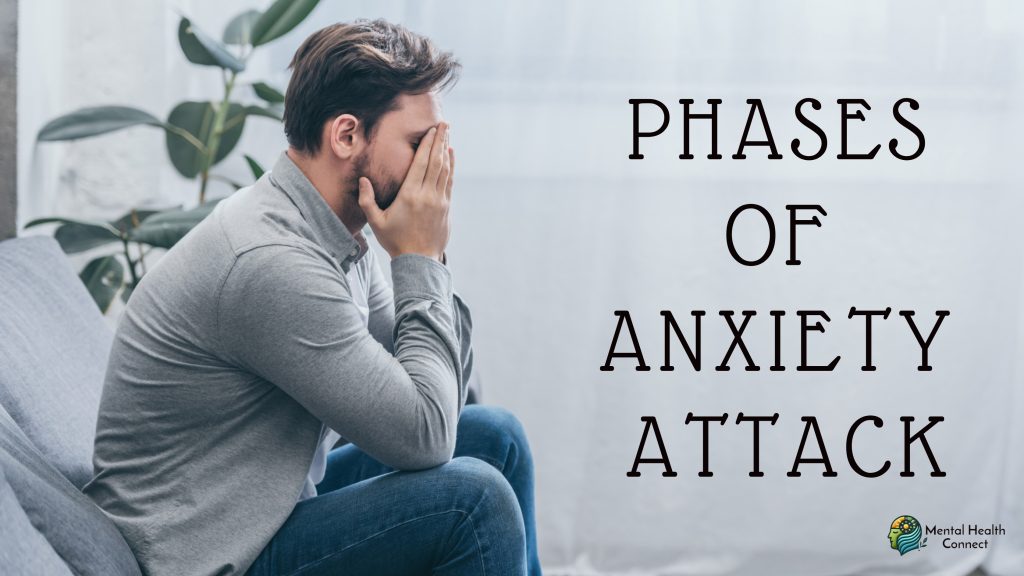How Long Do Anxiety Attacks Usually Last? Understanding Their Timeline and Management

Anxiety attacks intense surges of fear and discomfort that can feel overwhelming affect millions of people worldwide. If you’ve experienced one, you’ve likely wondered: How long will this last? Understanding the typical duration of anxiety attacks can help reduce the fear surrounding them and provide a sense of control during these challenging episodes.
The Typical Duration of Anxiety Attacks

Anxiety attacks, also known as panic attacks, generally follow a predictable timeline though the experience can vary significantly from person to person:
The Standard Timeline
Most anxiety attacks reach their peak intensity within 10 minutes and resolve within 20-30 minutes. Research from the American Psychological Association indicates that it’s physiologically difficult for the body to maintain the high-alert state characteristic of an anxiety attack for longer periods.
While the most intense symptoms typically subside within half an hour, residual effects such as fatigue, lingering tension, and heightened sensitivity may continue for several hours afterward.
Variations in Duration
Several factors can influence how long an anxiety attack lasts:
- First-time experiences: Initial anxiety attacks often feel longer and may be more intense due to the unfamiliarity of the sensations
- Trigger factors: Attacks triggered by specific phobias might last only as long as the exposure to the trigger
- Compounding stressors: Multiple stressors can extend the duration of symptoms
- Individual physiology: How quickly your body metabolizes stress hormones impacts recovery time
- Coping mechanisms: Effective response strategies can shorten the duration significantly
The Difference Between Anxiety Attacks and Panic Attacks

While often used interchangeably, there are clinical distinctions:
- Panic attacks are sudden, intense episodes with specific symptoms defined in the DSM-5, typically peaking within 10 minutes
- Anxiety attacks are not clinically defined but generally describe escalating anxiety that may build more gradually and sometimes last longer
For the purposes of this article, we’ll use anxiety attack as the general term most people use to describe these intense anxiety episodes.
The Phases of an Anxiety Attack

Understanding the typical progression can help you recognize where you are in the cycle:
1. Anticipatory Phase (Variable Duration)
Before the acute attack begins, many people experience:
- Increasing tension or unease
- A sense that something is “off”
- Initial physical symptoms like mild chest tightness or stomach discomfort
- Racing thoughts or worry
This phase can last minutes to hours, sometimes developing gradually enough that you might not recognize it until the acute phase begins.
2. Acute Phase (10-30 Minutes)
This is what most people identify as the “attack” itself, characterized by:
- Intense physical symptoms (racing heart, shortness of breath, dizziness)
- Peak emotional distress
- Fight-or-flight response activation
- Feeling of impending doom or loss of control
This phase typically reaches maximum intensity within 10 minutes and begins to subside within 30 minutes for most people.
3. Resolution Phase (30 Minutes to Several Hours)
As the attack subsides:
- Physical symptoms gradually decrease
- Cognitive clarity slowly returns
- Emotional state begins to stabilize
- Physical and mental fatigue often sets in
4. Aftermath (Hours to Days)
After the immediate attack resolves:
- Emotional vulnerability may persist
- Physical exhaustion is common
- Muscle soreness from tension may develop
- Heightened vigilance for symptoms often continues
What Makes Anxiety Attacks Feel Longer Than They Are

The subjective experience of time often differs from the objective duration during an anxiety attack. Several factors contribute to attacks feeling longer than they actually are:
Distorted Time Perception
Research in neuroscience shows that high-stress states alter time perception. The brain’s heightened monitoring of bodily sensations during an attack can make each moment feel extended.
Symptom Fluctuation
Anxiety attacks rarely maintain constant intensity throughout. Symptoms often wave temporarily improving then worsening again which can make the overall experience feel longer and more unpredictable.
Meta-Worry
Worrying about the anxiety attack itself (When will this end?) creates a secondary stress response that can prolong the experience.
When Anxiety Attacks Last Longer Than Usual
While most anxiety attacks resolve within 30 minutes, some situations can lead to extended durations:
Panic Attack Cycles
Sometimes, one attack triggers another in succession, creating what appears to be one extremely long attack but is actually multiple episodes with minimal recovery between them.
Underlying Anxiety Disorders
People with certain anxiety disorders may experience longer-duration attacks:
- Generalized Anxiety Disorder: May have prolonged anxiety episodes with fluctuating intensity
- Complex PTSD: Can experience extended panic states when triggered
- Agoraphobia: Fear of having an attack can extend its duration
Medical Considerations
Certain physical conditions can mimic or exacerbate anxiety attacks, potentially extending their duration:
- Thyroid disorders
- Cardiac arrhythmias
- Respiratory conditions
- Blood sugar imbalances
- Medication side effects
Strategies to Shorten Anxiety Attack Duration

While anxiety attacks are self-limiting, several techniques can help reduce their duration and intensity:
Breathing Techniques
Controlled breathing helps regulate the autonomic nervous system:
- Box breathing: Inhale for 4 counts, hold for 4, exhale for 4, hold for 4
- Diaphragmatic breathing: Deep belly breathing that activates the parasympathetic system
- 4-7-8 technique: Inhale for 4, hold for 7, exhale completely for 8
Grounding Exercises
These methods aid in reestablishing awareness of the present situtaion
- 5-4-3-2-1 technique: Name five things that you can see, four that you can touch, three that you can hear, two that you can smell, and one that you can taste.
- Physical grounding: Feel your feet on the floor, press your hands together, or hold an ice cube
- Cognitive anchoring: Focus on a specific, non-threatening detail in your environment
Acceptance and Mindfulness
Rather than fighting the sensations:
- Acknowledge that the attack is temporary
- Observe physical sensations without judgment
- Remind yourself that the symptoms are uncomfortable but not dangerous
- Practice “floating” with the experience rather than resisting it
Movement
When possible, gentle movement can help process stress hormones:
- Walking
- Gentle stretching
- Progressive muscle relaxation (tensing and releasing muscle groups)
Long-Term Management to Reduce Attack Frequency and Duration
Beyond addressing individual attacks, several approaches can help manage the overall condition:
Professional Treatment Options
Evidence-based approaches include:
- Cognitive Behavioral Therapy (CBT): Helps identify and change thought patterns that contribute to anxiety
- Exposure Therapy: Gradually reduces sensitivity to panic sensations
- Medication: SSRIs, SNRIs, and benzodiazepines (short-term) can help manage symptoms
- Biofeedback: Provides tools to recognize and control physiological stress responses
Lifestyle Modifications
Daily habits that reduce vulnerability to prolonged attacks:
- Regular physical exercise
- Consistent sleep patterns
- Balanced nutrition
- Limiting caffeine, alcohol, and recreational drugs
- Stress management practices
- Regular relaxation techniques
When to Seek Medical Help
Although anxiety attacks themselves are not medically dangerous, certain situations warrant professional evaluation:
- Anxiety attacks that regularly last more than an hour
- Symptoms that don’t fully resolve between episodes
- Attacks that cause you to fear leaving your home
- Physical symptoms that differ from your typical anxiety pattern
- First-time anxiety attacks, especially in adults over 40
- Attacks accompanied by fainting or severe vertigo
The Bottom Line on Anxiety Attack Duration
While anxiety attacks can feel endless when you’re experiencing them, remember that they are temporary neurobiological events with predictable patterns. Most resolve within 30 minutes, with the most intense symptoms peaking around the 10-minute mark.
Understanding this timeline can itself be therapeutic knowing an attack will end can reduce the fear that perpetuates the cycle. With proper management strategies and, when needed, professional treatment, many people not only experience shorter anxiety attacks but also fewer episodes over time.
If you experience recurring anxiety attacks, consider working with a mental health professional to develop a personalized management plan. With the right approach, anxiety attacks become less frequent, less intense, and shorter in duration ultimately allowing you to move through them with greater confidence and less disruption to your life.
-
 How to Support Someone with OCDApril 17, 2025
How to Support Someone with OCDApril 17, 2025 -


Leave a Reply